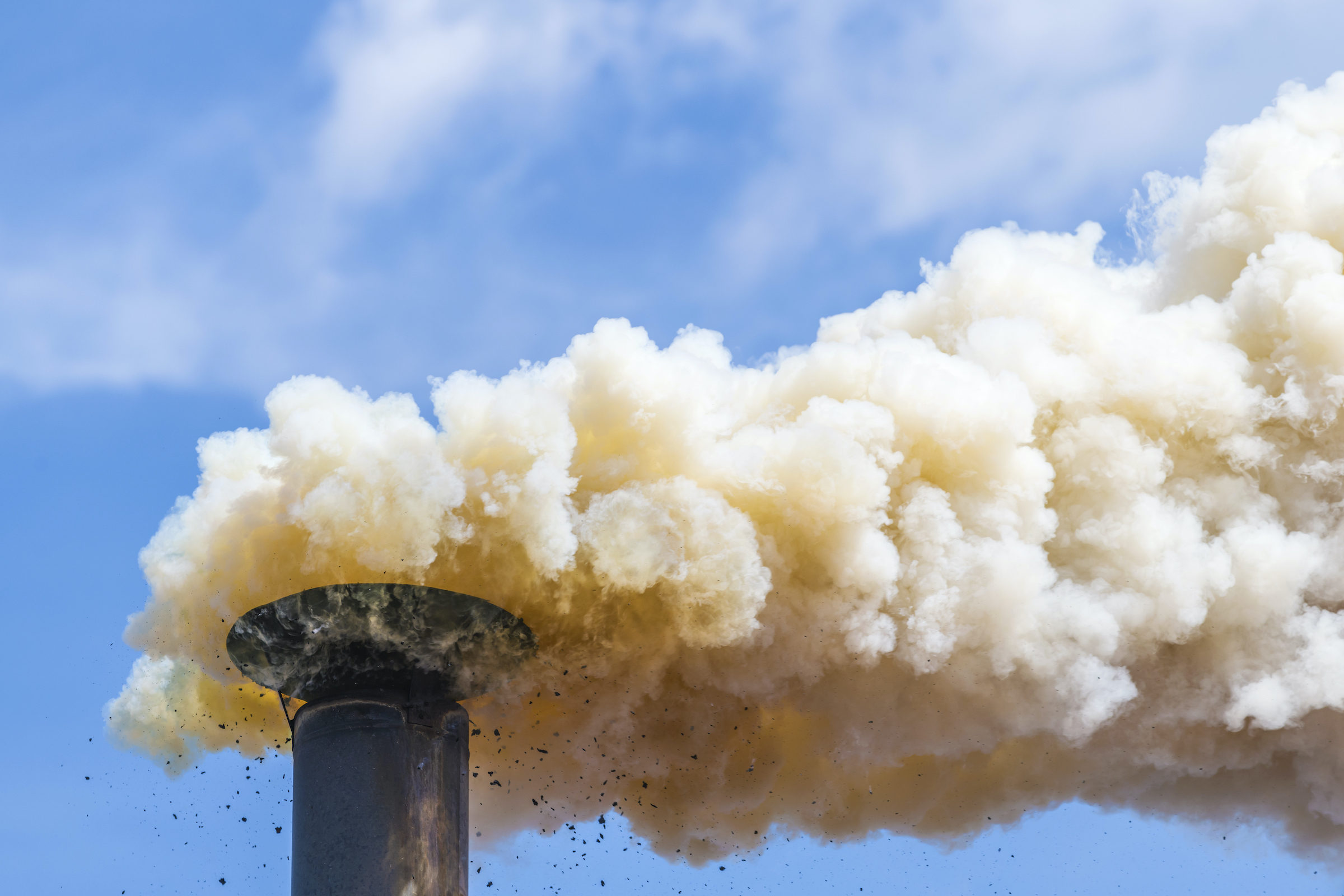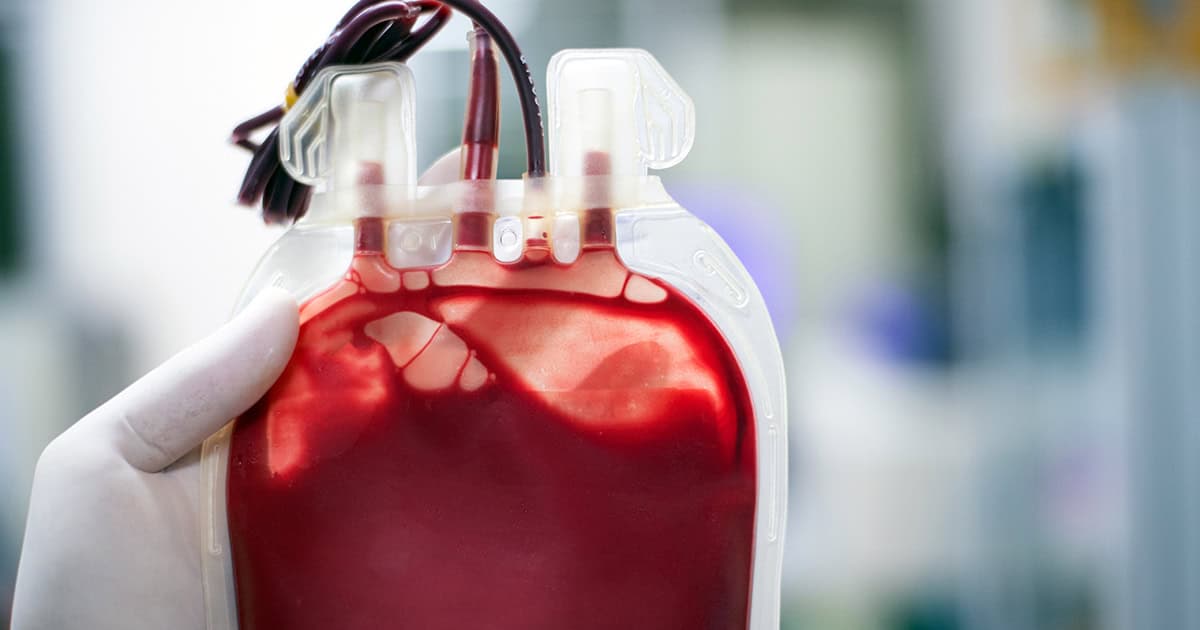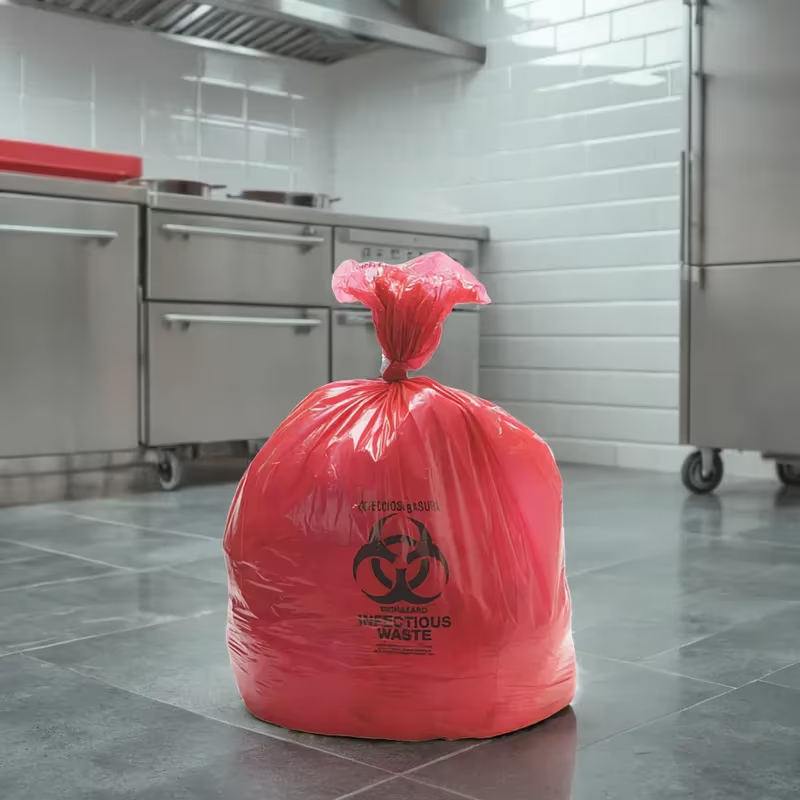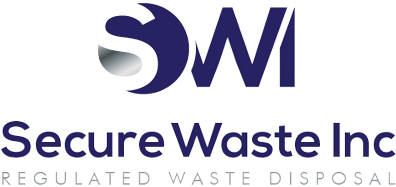How Healthcare Waste Contributes to Climate Change
Hospitals and clinics generate vast amounts of waste every day – from used syringes and bandages to single-use plastics and expired drugs. While much of the focus is on infection control and regulatory compliance, healthcare waste also has a significant environmental footprint. Plastics, pharmaceuticals, incinerators and landfills used in medical disposal all contribute greenhouse gas emissions and pollution. For example, studies show that only about 10–15% of healthcare waste is truly hazardous; the rest is ordinary waste (plastics, paper, food) that ends up burned or dumped. This mismanagement means a large fraction of what hospitals throw away ends up producing CO₂, methane and other global-warming emissions. Understanding these sources – from plastics manufacturing to waste incineration – is critical for hospitals to reduce their hospital carbon footprint and comply with environmental regulations. Secure Waste, a trusted medical waste partner, helps healthcare facilities meet those challenges by promoting eco-friendly waste management and full regulatory compliance.
Types of Healthcare Waste Driving Emissions
Healthcare waste comes in many forms, each with its own climate impacts. Below are key categories and how they contribute to greenhouse gases (GHGs):
- Plastics and Packaging: Hospitals use enormous quantities of disposable plastic gloves, syringes, tubing, trays and packaging. These plastics are derived from petrochemicals and require energy-intensive manufacturing. When incinerated or left in landfills, they release carbon dioxide (CO₂) and other pollutants. In fact, global plastic production and disposal already account for hundreds of millions of tons of CO₂-equivalent emissions per year. Within the US healthcare sector, plastic waste makes up a large share of municipal-like waste that often goes to landfill. Secure Waste works with hospitals to divert plastics from incineration and recycle when possible, cutting emissions and saving landfill space.
- Pharmaceuticals and Chemicals: Pharmaceuticals require significant energy and resources to produce. Expired or unused drugs and chemical reagents in labs can contribute to climate change when disposed improperly. Flushing drugs or incinerating large volumes of pharmaceuticals can generate greenhouse gases and toxic byproducts. For instance, some anesthetic gases (like desflurane and nitrous oxide) are potent GHGs when released. Studies estimate that pharmaceuticals and related chemicals can contribute a notable portion of a hospital’s carbon footprint. Proper disposal (e.g. chemical neutralization or energy recovery) is essential to prevent both climate and pollution impacts.
- Incineration Emissions: Many states and facilities rely on incinerators or autoclaves to destroy infectious medical waste (sharps, pathological waste, contaminated materials). Incinerators burn waste at high temperature, destroying pathogens but generating CO₂, nitrous oxide and toxic pollutants (dioxins, mercury and particulate matter). Although modern incinerators have strict emission controls under the EPA’s Clean Air Act, they still produce carbon emissions roughly equivalent to burning fossil fuel. In fact, incinerating 1 ton of medical waste can generate the equivalent of 1–2 tons of CO₂. This makes medical waste incineration a non-trivial source of healthcare waste emissions. Secure Waste emphasizes use of non-incineration options when safe and feasible, and ensures any needed incineration meets all EPA standards to minimize pollution.
- Landfills and Methane: General medical refuse (uncontaminated dressings, packaging, food waste) often ends up in landfills. While landfills are practical for non-hazardous waste, they are also significant sources of methane – a potent greenhouse gas about 25 times more powerful than CO₂ over the short term. As hospital waste (including paper, linens and cardboard) decomposes anaerobically in a landfill, it emits methane and CO₂. Even small amounts of medical waste disposed improperly can add up: for example, if infectious sharps or lab waste accidentally go to landfill, that contributes both methane and potential groundwater contaminants. Proper segregation (so only non-decomposable waste is landfilled) and use of methane-capture systems can mitigate this impact. Hospitals with on-site waste-to-energy or composting programs dramatically cut these landfill emissions.
Together, these sources make healthcare a surprising contributor to climate change. In fact, analyses by health sector researchers show that if the global healthcare system were a country, it would rank among the world’s largest greenhouse gas emitters (roughly 4–5% of global emissions). In the United States, the healthcare industry alone accounts for about 8–10% of national GHGs. While energy use (heating, electricity and transport) is the biggest part of a hospital’s footprint, waste disposal – from plastics to incineration – is a significant portion. Reducing healthcare waste emissions is therefore essential for any hospital aiming to be part of the climate solution.
Carbon Footprint of Hospital Waste
Every hour, a typical hospital generates dozens of pounds of waste per patient. Over a year, that can amount to hundreds of tons of waste – and the carbon footprint of handling it. For perspective, one study found that an average hospital bed produces roughly 4–5 tons of waste annually. Multiply that by all the beds in a large facility, and the numbers become substantial.
To illustrate: a mid-size U.S. hospital might create several thousand tons of solid waste each year. If even half of that goes to high-temperature incineration, it could produce several thousand tons of CO₂-equivalent emissions. And if the rest goes to landfill, it emits methane and requires fossil fuels for transport. In fact, a 2020 industry analysis showed that hospital waste disposal accounted for a notable fraction (often 10–20%) of a hospital’s total carbon footprint. This includes not just the fuel to haul waste and run incinerators, but the upstream energy to produce the disposables in the first place.
Hospitals with poor waste segregation can drastically increase their carbon footprint. For example, mixing recyclables or clean cardboard with infectious waste forces needless incineration. Conversely, hospitals that rigorously sort and recycle can cut their waste footprint by one-third or more. One case study reported a major medical center reducing waste-to-landfill by 40% through recycling initiatives, while also lowering disposal emissions. Every ton of plastic or paper recycled instead of burned saves roughly 2–3 tons of CO₂.
At the national level, healthcare’s waste contributes significantly to the overall “hospital carbon footprint.” Researchers estimate U.S. hospitals consume over 880 trillion BTUs of energy annually – equivalent to the carbon output of millions of cars. Waste management (treatment, transport, disposal) is embedded in that total. As such, hospitals are now including waste reduction as a key strategy in carbon neutrality plans. Programs to measure and report waste emissions are growing, following carbon accounting frameworks. The data shows that smart waste practices (recycling, reusing, energy recovery) can meaningfully shrink a hospital’s carbon profile.
Real-World Examples of Impact
Several hospitals and regions have publicly documented the climate and compliance impacts of medical waste:
- U.S. Hospitals Reducing Plastics: New York’s largest hospital system, for example, launched a sustainability campaign that cut plastic waste by 30% in three years. By switching from disposable to reusable sterilizable devices, recycling high-grade plastics, and avoiding unnecessary packaging, they eliminated thousands of tons of CO₂ emissions. Similarly, a California healthcare network reported preventing over 100 metric tons of waste from incineration by improved sorting – the CO₂ savings were equivalent to taking dozens of cars off the road.
- Waste-to-Energy Programs: Some U.S. and European hospitals feed appropriate medical waste into waste-to-energy (WtE) facilities. For example, a hospital in Copenhagen sends incinerable waste to a clean-energy plant that recycles heat and electricity back to the facility. This approach still burns waste, but captures most CO₂ and uses it for power, reducing the net emissions. A study of such European WtE systems found they achieve net greenhouse savings compared to landfilling by generating renewable energy and offsetting fossil-fuel use.
- COVID-19 Waste Surge: The pandemic dramatically illustrated healthcare waste impact. At one New York hospital, single-use mask and gown waste tripled, leading to a sharp rise in incineration emissions. A 2021 audit found the facility’s COVID waste added over 500 metric tons of CO₂ over six months. This spike underscored the need for resilient waste strategies – for instance, safe reuse and sterilization programs – to keep climate impact manageable even during crises.
- International Case – NHS UK: The United Kingdom’s National Health Service (NHS) is one of the first health systems to publicly account for waste emissions. NHS reports show that after energy use, waste management (incineration and landfill) is a leading source of their carbon footprint. Efforts like phasing out single-use devices and increasing recycling have already saved thousands of tons of CO₂ across the NHS. The NHS Carbon Reduction Strategy mandates a 50% cut in clinical waste emissions by 2030, for example, showing how compliance and sustainability go hand-in-hand.
These examples highlight that while regulations drive much of the waste handling, environmental impacts can vary widely. With the right programs (source reduction, reuse, recycling, green disposal), hospitals can dramatically lower emissions. In all cases, having a knowledgeable compliance partner like Secure Waste ensures that changes meet health codes while also improving climate outcomes.
Sustainable Solutions for Medical Waste
Fortunately, there are many eco-friendly waste management strategies available that curb emissions and meet regulations. Hospitals should consider a multi-pronged approach:
- Waste-to-Energy (WtE): Modern WtE facilities can process infectious medical waste under strict emissions controls, recovering energy (electricity/steam) in the process. Though still combustion, this displaces fossil-fuel electricity and captures CO₂ in energy form. When designed for healthcare waste, these systems meet EPA criteria and can reduce net emissions compared to plain incineration. Secure Waste can help connect hospitals to certified WtE providers where incineration is unavoidable, ensuring compliance with air quality permits.
- Recycling and Reuse: A large portion of hospital waste is similar to regular municipal waste – plastics, paper, metals – which can often be recycled. Instituting aggressive recycling programs (bins for different materials, staff training) can divert thousands of pounds of waste from disposal each month. For instance, sterile plastic containers and packaging can be cleaned and baled for recycling, rather than incinerated. Additionally, swapping single-use instruments for autoclave-safe reusable ones (e.g. stainless steel scalpels, sterilizable linens) drastically cuts waste volume. Secure Waste audits hospital waste streams to identify recyclable streams and coordinate with recyclers, minimizing healthcare waste emissions at the source.
- Eco-Compliant Disposal Methods: Not all waste requires incineration. Many states now allow alternatives like autoclaving (steam sterilization) or microwave treatment for infectious waste. These processes disinfect waste using electricity and steam, producing far lower carbon emissions than burning. For example, a study found that autoclaving infectious waste results in 80–90% fewer emissions compared to incineration. Secure Waste specializes in sorting waste so that only genuinely biohazardous material is autoclaved or incinerated; general waste goes to recycling or landfill after sterilization. Composting organic hospital waste (food scraps, landscaping debris) is another growing practice that keeps methane out of landfills. All these eco-friendly disposal options align with EPA and CDC guidelines when done properly.
- Green Purchasing and Reduction: Minimizing waste upstream is crucial. Hospitals can adopt procurement policies that favor minimal packaging, recyclable materials or longer-lasting equipment. For example, buying single-dose medications only when needed or choosing suppliers that use returnable packaging reduces the waste burden. Staff education on not overusing disposables (for instance, using washable basins instead of wrapping each instrument) also helps. Secure Waste provides training and resources on best practices, helping facilities not only handle waste, but reduce it at the source.
By combining these solutions, hospitals can greatly lower their hospital carbon footprint from waste. For example, one healthcare group reported cutting its clinical waste by 33% and diverting it into recycling and composting; this translated to a 15% reduction in their overall waste-related emissions. Importantly, each sustainable step must comply with safety rules – Secure Waste ensures all alternative processes meet OSHA, EPA and local health department requirements.
Regulatory Concerns and Compliance
Healthcare waste is subject to strict federal and state regulations. Compliance is not optional – it protects people and the environment. Key regulations include:
- EPA and RCRA: The U.S. Environmental Protection Agency (EPA) broadly governs solid waste through the Resource Conservation and Recovery Act (RCRA). States often define “regulated medical waste” (infectious or hazardous) under state law rather than federal RCRA. However, RCRA’s general rules for waste disposal and transport still apply. For example, disposing of chemicals or radioactives must meet RCRA/TSCA standards. Secure Waste helps hospitals classify waste properly so that only truly infectious waste is treated as hazardous, maximizing recyclable material while avoiding EPA violations.
- Clean Air Act (CAA): Medical waste incinerators fall under the CAA’s New Source Performance Standards (NSPS) and NESHAP (hazardous air pollutants) rules. These regulations limit emissions of particulates, mercury, lead, and dioxins/furans when burning medical waste. Hospitals must use approved incinerators or furnaces with modern scrubbers. Secure Waste ensures any incineration done on behalf of a client meets all CAA emission limits, often collaborating with compliance officers to secure permits and monitoring.
- OSHA Bloodborne Pathogens Standard: While OSHA’s focus is worker safety, it indirectly affects waste. For instance, sharps disposal containers must meet OSHA/CDC guidelines to prevent needlestick injuries. Misidentifying sharps or contaminated materials can lead to OSHA citations. Secure Waste trains hospital staff on proper sharps segregation and disposal, preventing OSHA fines while also keeping waste streams clean for environmental purposes.
- DOT and Hazardous Materials: If a hospital transports infectious waste off-site, it falls under the Department of Transportation’s Hazardous Materials regulations. Secure Waste provides compliant packaging and paperwork for transport vehicles, so that clinical waste shipped to treatment facilities or disposal sites meets DOT standards and does not cause spills or accidents.
- Joint Commission and Accreditation: The Joint Commission on Accreditation of Healthcare Organizations (JCAHO) requires hospitals to have environmental safety programs, including proper waste management plans. Non-compliance can affect a hospital’s accreditation status. Secure Waste works with facility compliance officers to ensure all waste handling – from off-site contracts to on-site sorting – passes review during accreditation surveys.
Regulatory bodies are increasingly linking waste management to environmental responsibility. For example, the Centers for Medicare & Medicaid Services (CMS) now encourages hospitals to develop sustainability plans as part of the Conditions of Participation. Moreover, failure to follow waste regulations (e.g. illegal dumping or incineration) can result in hefty fines – some states levy penalties of $10,000+ per violation. Thus, partnering with a knowledgeable waste service like Secure Waste is not only good for the planet but essential for legal compliance. Our experts stay up-to-date on new rules (like bans on medical-grade plastics or stricter emissions limits) so hospitals never fall behind.
Choosing Secure Waste for Eco-Friendly Disposal
Reducing medical waste emissions starts with choosing the right waste disposal partner. Secure Waste is the trusted provider specializing in eco-friendly waste management for healthcare. We emphasize sustainability without compromising compliance:
- Full Compliance: Secure Waste operates under the latest EPA, OSHA and DOT guidelines, and has all necessary permits in every state. We audit waste streams to ensure segregation is done correctly on-site. Facilities using Secure Waste avoid cross-contamination fines and pass all inspections with ease.
- Sustainable Practices: Our services include recycling programs for paper, plastics and metals; waste-to-energy alternatives; and advanced autoclave sterilization. We actively divert waste from landfills. In fact, many Secure Waste clients have achieved greener accreditations by meeting the company’s waste-reduction benchmarks. Staff training resources are provided to help employees understand the climate impact of each waste category.
- Data and Reporting: Secure Waste supplies clients with detailed waste and emissions reports. These analytics show a hospital exactly how much CO₂e is being generated by its waste processes, and tracks reductions over time. This transparency supports both sustainability goals and regulatory reporting (for example, in a state emission inventory).
- Customized Solutions: Every hospital is different. Secure Waste works with facilities to develop tailored waste disposal plans – whether it’s a recycling initiative in the cafeteria or a specialized contract for pharmaceutical waste destruction. Our experts keep up with innovations (compostable packaging, renewable energy credits, etc.) to integrate into client programs.
Choosing Secure Waste means choosing a partner with both environmental expertise and unwavering commitment to legal compliance. We regularly collaborate with hospital leadership, sustainability officers and compliance teams to ensure waste management aligns with broader environmental responsibility objectives. By highlighting “green” disposal options, we help hospitals meet community expectations and professional accreditation standards simultaneously.
Conclusion: A Call to Action
Medical waste is more than a sanitation issue – it’s a climate issue. The plastics, chemicals, incinerators and landfills used to manage healthcare refuse all generate greenhouse gases and pollutants. Hospital administrators and compliance officers must recognize that medical waste and climate change are linked, and that sustainable waste management is both an environmental and regulatory priority. By reducing, reusing, recycling and properly treating medical refuse, hospitals shrink their hospital carbon footprint and demonstrate environmental leadership.
Secure Waste stands ready to help healthcare facilities meet these challenges. As a trusted partner in compliant medical waste disposal, Secure Waste provides turn-key solutions that minimize emissions and maximize safety. We ensure your waste processes adhere to EPA, OSHA, state and local regulations while implementing cutting-edge, eco-friendly practices. Together, we can transform healthcare waste from a climate problem into an opportunity for sustainability.
Contact Secure Waste today to develop a compliant, eco-friendly waste management program. Our experts will conduct a full waste assessment and outline how your hospital can reduce emissions, cut costs and stay fully compliant. Secure Waste is committed to keeping healthcare facilities clean, compliant and climate-friendly – reach out and make your medical waste program part of the solution to climate change.
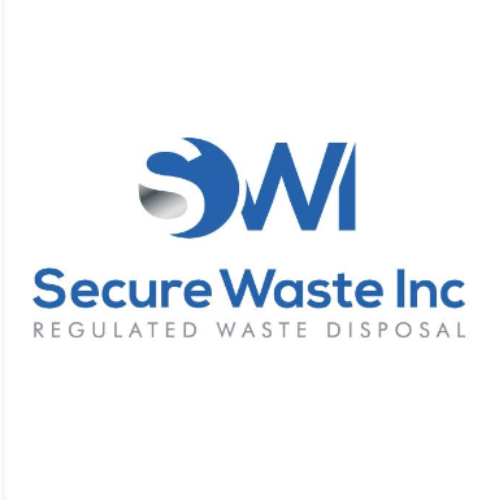
Expert Medical Waste Management: With over 25 years of industry experience, Secure Waste is a trusted local leader in hazardous and biohazardous waste disposal across Maryland, Virginia, and Washington, D.C. Specializing in medical waste management, sharps needle disposal, and biohazard waste removal, the company ensures full compliance with federal, state, and local regulations while prioritizing environmental sustainability.
The company also offers additional services, including secure document shredding and sharps container sales, providing comprehensive solutions for healthcare facilities and businesses. Our cost-effective services help clients maintain regulatory compliance without unexpected costs.
With a commitment to customer satisfaction, Secure Waste offers tailored waste management plans that align with industry best practices. Their team of experts provides reliable, timely, and compliant services, making them the preferred choice for medical waste disposal. For a free waste quote or more information, visit www.securewaste.net
